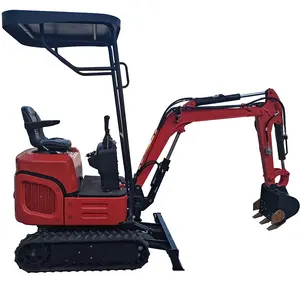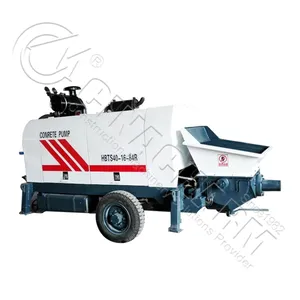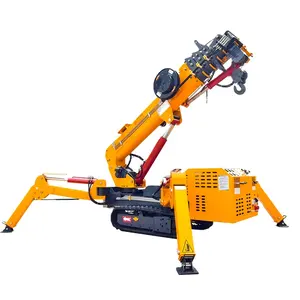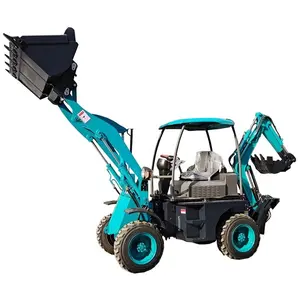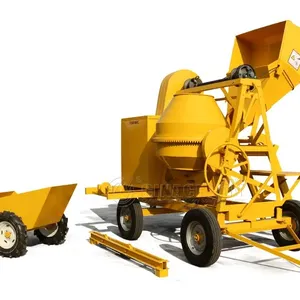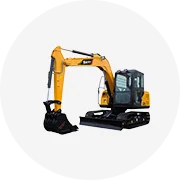Phổ biến trong ngành của bạn






Nhà Máy rắn cacbua 2 Sáo Xoắn khoan bit với lỗ làm mát cacbua vonfram rắn cho thép
1,20 US$ - 5,00 US$
Đơn hàng tối thiểu: 10 Cái







Kim Cương lõi khoan bit cho hard rock khai thác mỏ NQ no NX HQ ho PQ PO ngâm tẩm kim cương lõi bit
60,00 US$ - 80,00 US$
Đơn hàng tối thiểu: 1 Cái







Hot bán CNC lưỡi dài 5 đường kính nội bộ lạnh bê tông Carbide khoan bit cho ngành công nghiệp luyện kim chế biến khuôn
1,20 US$ - 5,00 US$
Đơn hàng tối thiểu: 10 Cái







12mm 15mm NQ nq2 nqtk nq3 nqtt ngâm tẩm kim cương khoan bit công cụ và thiết bị
40,00 US$ - 60,00 US$
Đơn hàng tối thiểu: 1 Cái







BQ NQ HQ PQ ngâm tẩm kim cương lõi khoan bit cho khai thác mỏ
Sẵn sàng vận chuyển
200,00 US$
Đơn hàng tối thiểu: 1 Cái
Vận chuyển mỗi chiếc: 65,01 US$



Thâm Nhập Nhanh NQ/HQ PDC Lõi Bit, Khoan Bit Với Tuổi Thọ Dài
Sẵn sàng vận chuyển
100,00 US$ - 105,00 US$
Đơn hàng tối thiểu: 1 Cái
Vận chuyển mỗi chiếc: 20,69 US$






Đầu Khoan Lõi PDC HQ/NQ/PQ
Sẵn sàng vận chuyển
40,00 US$ - 80,00 US$
Đơn hàng tối thiểu: 1 Cái
Vận chuyển mỗi chiếc: 98,25 US$






94Mm PDC Bước Lõi Khoan Bit Cua Coring Bit NQ Kích Thước Cho Khai Thác Than
100,00 US$ - 120,00 US$
Đơn hàng tối thiểu: 50 Cái


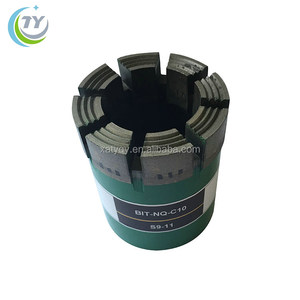



Wireline kim cương khoan bit NQ và HQ cho đá cứng khoan Trong Khai thác vàng
Sẵn sàng vận chuyển
100,00 US$
Đơn hàng tối thiểu: 1 Cái
Vận chuyển mỗi chiếc: 23,44 US$






Mũi Khoan Pdc 6 Inch Đầu Thăm Dò Tiện Dụng Cho Ngành Khai Thác Mỏ Mũi Khoan Kim Cương Nq
63,00 US$ - 67,00 US$
Đơn hàng tối thiểu: 1 Cái






Geotec Wuxi vương miện brocas PDC HQ kim cương lõi bit PDC lõi khoan bit t6101 HQ/NQ/PQ địa chất nước giếng khoan
30,00 US$ - 120,00 US$
Đơn hàng tối thiểu: 1 Cái
Vận chuyển mỗi chiếc: 288,00 US$






Wireline Lõi Bit/Ngâm Tẩm Kim Cương Lõi Bit Lõi Barrel Bits Aq/Bq/Nq/Hq/Pq, Aq2/Bq2/Nq2/Hq2/Pq2
10,00 US$ - 54,00 US$
Đơn hàng tối thiểu: 5 Bộ




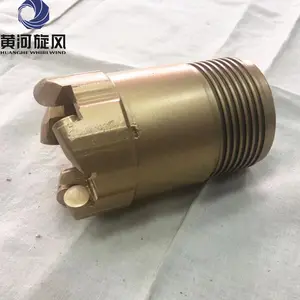

Thâm nhập nhanh bit lõi NQ/HQ PDC, mũi khoan với tuổi thọ dài
70,00 US$ - 80,00 US$
Đơn hàng tối thiểu: 1 Cái






Ngâm Tẩm Kim Cương Lõi Bit Lõi Thùng Bits AQ/BQ/NQ/HQ/PQ, AQ2/BQ2/NQ2/HQ2/PQ2
160,00 US$ - 300,00 US$
Đơn hàng tối thiểu: 1 Cái
Vận chuyển mỗi chiếc: 157,79 US$






Kbjz Dây Ép nóng AQ HQ PQ NQ 75mm Mũi khoan kim cương được ngâm tẩm để khai thác than và khoan đá cứng
65,00 US$ - 68,00 US$
Đơn hàng tối thiểu: 1 Cái
Vận chuyển mỗi chiếc: 89,18 US$






Bit lõi dây/bit lõi kim cương ngâm tẩm bit bit Thùng bit AQ/BQ/NQ/HQ/PQ,/nq2/HQ2
Sẵn sàng vận chuyển
289,00 US$
Đơn hàng tối thiểu: 1 Cái
Vận chuyển mỗi chiếc: 51,22 US$











Mũi Khoan Lõi Kim Cương Được Ngâm Tẩm AQ,BQ,NQ,HQ,PQ Để Khoan Giếng Nước
59,00 US$
Đơn hàng tối thiểu: 10 Cái






AQ/BQ/NQ/HQ/PQ Lõi Kim Cương Khoan Bit Cho Khoan Lõi Địa Chất
90,00 US$ - 95,00 US$
Đơn hàng tối thiểu: 5 Cái






Mũi Khoan Lõi Kim Cương Ngâm Tẩm Trung Bình Đến Siêu Cứng AQ,BQ, HQ,PQ Dia56mm
129,00 US$
Đơn hàng tối thiểu: 1 Cái
Vận chuyển mỗi chiếc: 29,04 US$






Nóng Bán Chi phí thấp kim cương lõi khoan bit wireline lõi thùng BQ/ NQ/HQ/PQ lõi khoan công cụ
76,00 US$ - 152,00 US$
Đơn hàng tối thiểu: 1 Bộ


















Mũi Khoan Lõi Kim Cương Được Ngâm Tẩm AQ,BQ,NQ,HQ,PQ Để Khoan Giếng Nước Và Khảo Sát Địa Chất
Sẵn sàng vận chuyển
121,00 US$ - 125,00 US$
Đơn hàng tối thiểu: 1 Cái
Vận chuyển mỗi chiếc: 40,48 US$






Mũi Khoan Lõi PDC Kim Cương HQ/BQ/NQ/PQ Giảm Giá Mạnh Tuổi Thọ Làm Việc Lâu Dài
400,00 US$ - 3.000,00 US$
Đơn hàng tối thiểu: 1 Đơn vị






Thiết bị chất lượng cao cũng khoan T2-76 NQ và HQ kim cương lõi bit
68,00 US$ - 75,00 US$
Đơn hàng tối thiểu: 12 Cái






Giá Thấp Lõi NQ, HQ, PQ Khoan Kim Cương Lõi Khoan Bit
80,00 US$ - 300,00 US$
Đơn hàng tối thiểu: 1 Cái



NQ trực tiếp các nhà sản xuất bán ống đơn/Ống Đôi Kim Cương reaming Shell 2 7/8''
51,50 US$ - 52,50 US$
Đơn hàng tối thiểu: 5 Cái
Vận chuyển mỗi chiếc: 15,35 US$






Mũi Khoan Lõi Vỏ Kim Cương Tẩm Tẩm AQ,BQ,NQ,HQ,PQ, Dùng Cho Khai Thác Địa Chất
290,00 US$ - 300,00 US$
Đơn hàng tối thiểu: 50 Cái






3.5 "Khoan Ống AQ, BQ, NQ, NQ2, NQ3, HQ, HQ3, PQ, PQ3 Khoan Rod Với Nhà Máy Giá
Sẵn sàng vận chuyển
130,00 US$
Đơn hàng tối thiểu: 1 Cái
Vận chuyển mỗi chiếc: 169,68 US$






AQ,BQ,NQ,HQ,PQ dây dòng ngâm tẩm kim cương lõi khoan bit cho địa chất thăm dò khoáng sản lõi khoan bit
Sẵn sàng vận chuyển
85,00 US$ - 95,00 US$
Đơn hàng tối thiểu: 1 Cái
Vận chuyển mỗi chiếc: 20,69 US$





Vương miện khoan 3 lưỡi 4 cánh API không lõi kéo kích cỡ HQ/NQ/PQ Trung Quốc nhà sản xuất PDC khoan bit
Sẵn sàng vận chuyển
70,00 US$ - 130,00 US$
Đơn hàng tối thiểu: 1 Cái
Vận chuyển mỗi chiếc: 40,46 US$






H22 côn sử dụng khoan que 60mm PQ 3M HQ 3m NQ 114mm khoan que Ống r32x2m
15,80 US$ - 16,70 US$
Đơn hàng tối thiểu: 100 Cái
Vận chuyển mỗi chiếc: 13,91 US$






High Quality portable NQ,BQ, HQ PDC Diamond Core Drill Bit
Sẵn sàng vận chuyển
500,00 US$ - 800,00 US$
Đơn hàng tối thiểu: 1 Bộ
Vận chuyển mỗi chiếc: 30,00 US$






Mũi khoan NQ / PQ/HQ3/pq3/Mũi khoan lõi kim cương cho đá cứng
90,00 US$ - 120,00 US$
Đơn hàng tối thiểu: 1 Bộ







AQ,BQ,NQ,HQ,PQ ngâm tẩm địa chất kim cương lõi khoan bit để bán, kim cương lõi bit cho đá cứng
Sẵn sàng vận chuyển
75,00 US$ - 180,00 US$
Đơn hàng tối thiểu: 1 Cái
Vận chuyển mỗi chiếc: 27,94 US$






NQ, BQ, HQ, PQ kim cương lõi mẫu khoan bit TW loạt khoan bit cho khai thác mỏ thăm dò
38,99 US$ - 88,99 US$
Đơn hàng tối thiểu: 1 Cái
Vận chuyển mỗi chiếc: 18,94 US$
Các danh mục hàng đầu
Giới thiệu về bit nq
Tìm bền và chất lượng tốt nhất. bit nq với giá cả phải chăng chỉ có tại Alibaba.com. Để nâng cao hiệu quả và chất lượng của xi măng ,. bit nq là những phần quan trọng của thiết bị, đó là lý do tại sao bạn không được thỏa hiệp về chất lượng của chúng. Nó dán kín vỏ vào tường và toàn bộ công việc sẽ không thành công nếu vỏ chạm vào lỗ ở bất kỳ bộ phận nào.
Trên Alibaba.com, bạn có thể tìm thấy nhiều loại. bit nq, là yếu tố quan trọng để đảm bảo rằng chất lượng xi măng là tối ưu. Nó làm như vậy bằng cách ngăn chặn sự xâm nhập của bùn và cách ly các khu vực không đạt tiêu chuẩn. Về cơ bản có bốn kích thước tùy thuộc vào hình dạng của chúng. Lò xo cánh cung phù hợp nhất cho giếng đứng và vì tính linh hoạt của nó, nó có thể đi qua các lỗ hẹp. Các loại cứng được làm bằng gang hoặc thanh thép, có nghĩa là chúng hoàn hảo cho một kích thước cụ thể.
Các loại bán cứng kết hợp đặc tính của lò xo cánh cung và các loại cứng. Chúng có thể được nén giống như lò xo cánh cung trong khi có lực phục hồi cao như các loại cứng. Các cánh trên khuôn được làm bằng vật liệu sợi carbon và gốm và có thể dễ dàng dán lên bề mặt vỏ. Phục hồi lực là tiêu chí quan trọng quyết định hiệu quả a. bit nq sẽ là.
Tại Alibaba.com, bạn có thể nhận được giải pháp cho mọi nhu cầu của mình ở một nơi một cách dễ dàng và nhanh chóng. Tất cả. bit nq được bán bởi những người bán, nhà sản xuất và nhà cung cấp đã được xác minh, điều này đảm bảo rằng bạn luôn nhận được sự hài lòng tối đa.
Trên Alibaba.com, bạn có thể tìm thấy nhiều loại. bit nq, là yếu tố quan trọng để đảm bảo rằng chất lượng xi măng là tối ưu. Nó làm như vậy bằng cách ngăn chặn sự xâm nhập của bùn và cách ly các khu vực không đạt tiêu chuẩn. Về cơ bản có bốn kích thước tùy thuộc vào hình dạng của chúng. Lò xo cánh cung phù hợp nhất cho giếng đứng và vì tính linh hoạt của nó, nó có thể đi qua các lỗ hẹp. Các loại cứng được làm bằng gang hoặc thanh thép, có nghĩa là chúng hoàn hảo cho một kích thước cụ thể.
Các loại bán cứng kết hợp đặc tính của lò xo cánh cung và các loại cứng. Chúng có thể được nén giống như lò xo cánh cung trong khi có lực phục hồi cao như các loại cứng. Các cánh trên khuôn được làm bằng vật liệu sợi carbon và gốm và có thể dễ dàng dán lên bề mặt vỏ. Phục hồi lực là tiêu chí quan trọng quyết định hiệu quả a. bit nq sẽ là.
Tại Alibaba.com, bạn có thể nhận được giải pháp cho mọi nhu cầu của mình ở một nơi một cách dễ dàng và nhanh chóng. Tất cả. bit nq được bán bởi những người bán, nhà sản xuất và nhà cung cấp đã được xác minh, điều này đảm bảo rằng bạn luôn nhận được sự hài lòng tối đa.

